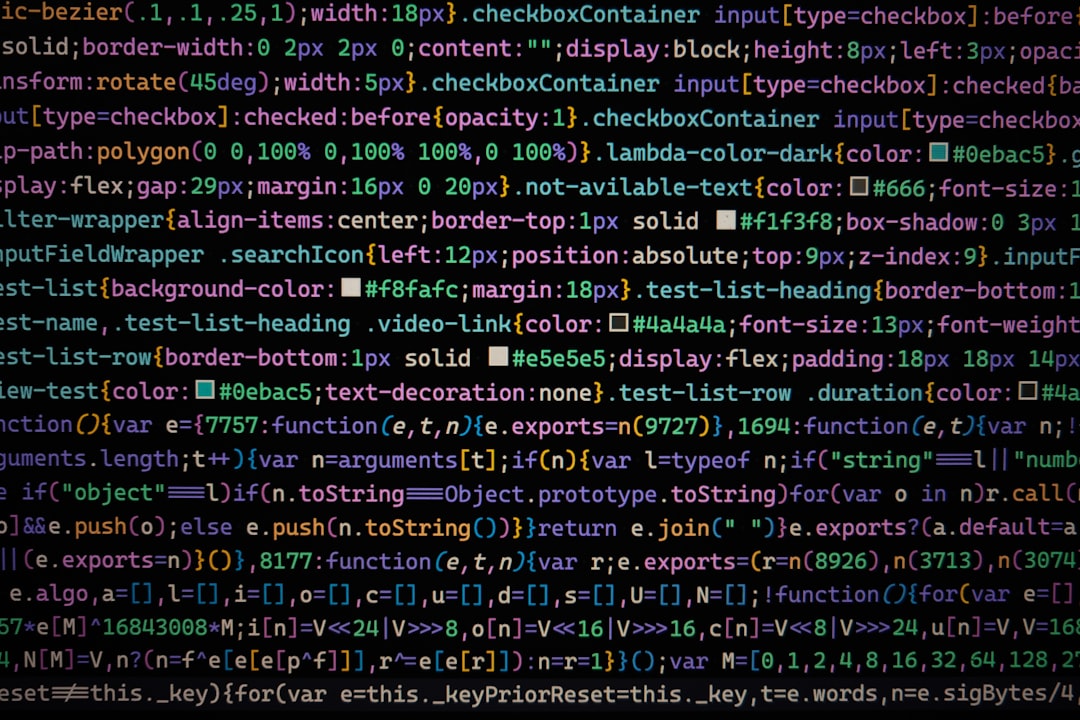Functions are the fundamental building blocks of any application, the verbs that execute logic, manipulate data, and drive user interactions. In JavaScript, their dynamic nature offers flexibility but can also lead to runtime errors and hard-to-debug code. This is where TypeScript steps in, transforming functions into robust, predictable, and self-documenting units of code. By adding a powerful static type system on top of JavaScript, TypeScript allows developers to define clear contracts for their functions, catching errors during development long before they reach production.
This comprehensive guide will take you on a deep dive into TypeScript functions. We’ll start with the core concepts of typing parameters and return values, move on to practical implementations like handling asynchronous API calls and DOM manipulation, explore advanced techniques such as generics and overloading, and conclude with best practices for writing clean, maintainable, and efficient functions. Whether you’re working with TypeScript React, TypeScript Node.js, or any other modern framework, mastering functions is key to leveraging the full power of the language and building scalable, enterprise-grade applications.
Core Concepts: Building a Strong Foundation
Before diving into complex patterns, it’s crucial to understand the fundamentals of how TypeScript enhances standard JavaScript functions. This foundation is built on explicit type annotations, which provide clarity and safety.
Typing Parameters and Return Values
The most basic feature of TypeScript Functions is the ability to add type annotations to parameters and the function’s return value. This creates a clear contract: the function expects arguments of a certain type and promises to return a value of a specific type. If this contract is violated, the TypeScript Compiler will raise an error immediately.
// Define an interface for a User object
interface User {
id: number;
name: string;
email: string;
}
/**
* A function to create a welcome message for a user.
* @param user - The user object, must conform to the User interface.
* @returns A welcome string.
*/
function createWelcomeMessage(user: User): string {
return `Welcome, ${user.name}! We've sent a confirmation to ${user.email}.`;
}
// --- Usage ---
const newUser: User = {
id: 1,
name: 'Alice',
email: 'alice@example.com',
};
const message = createWelcomeMessage(newUser);
console.log(message); // "Welcome, Alice! We've sent a confirmation to alice@example.com."
// The following would cause a compile-time error:
// createWelcomeMessage({ name: 'Bob' }); // Error: 'id' and 'email' are missing
// const invalidUser: { name: string } = { name: 'Bob' };
// createWelcomeMessage(invalidUser); // Error: Argument of type '{ name: string; }' is not assignable to parameter of type 'User'.Function Types and Arrow Functions
TypeScript allows you to define a “function type,” which is a reusable signature that can be applied to any function expression or declaration. This is incredibly useful for callbacks or when passing functions as parameters. Arrow Functions TypeScript syntax is concise and widely used for this purpose.
// Define a function type using a type alias
type MathOperation = (a: number, b: number) => number;
// Assign arrow functions that match the type signature
const add: MathOperation = (a, b) => a + b;
const subtract: MathOperation = (a, b) => a - b;
console.log(add(10, 5)); // 15
console.log(subtract(10, 5)); // 5
// This would cause a type error because the signature doesn't match
// const multiply: MathOperation = (a, b, c) => a * b * c; // Error!Optional, Default, and Rest Parameters
TypeScript supports optional parameters (using ?), default-initialized parameters, and rest parameters. Optional parameters must come after required parameters. Default parameters have their types inferred by TypeScript, providing both a type and a value if one isn’t provided. Rest parameters allow you to pass a variable number of arguments into a function as an array.

/**
* Builds a user profile with optional and default values.
* @param firstName - The user's first name (required).
* @param lastName - The user's last name (required).
* @param title - The user's title (optional).
* @param role - The user's role (defaults to 'user').
*/
function buildUserProfile(
firstName: string,
lastName: string,
title?: string,
role: string = 'user'
): string {
let profile = `${firstName} ${lastName} (${role})`;
if (title) {
profile = `${title}. ${profile}`;
}
return profile;
}
console.log(buildUserProfile('John', 'Doe')); // "John Doe (user)"
console.log(buildUserProfile('Jane', 'Doe', 'Dr.')); // "Dr. Jane Doe (user)"
console.log(buildUserProfile('Sam', 'Smith', undefined, 'admin')); // "Sam Smith (admin)"Practical Implementations: Functions in Action
Theory is important, but the real power of TypeScript Functions shines when applied to real-world problems, such as interacting with APIs or manipulating the browser’s Document Object Model (DOM).
Interacting with the DOM Safely
Working with the DOM in plain JavaScript can be error-prone, as methods like document.getElementById return a generic HTMLElement | null. TypeScript forces you to handle the possibility of a null value and allows you to use Type Assertions to specify the exact element type you’re working with, unlocking type-specific properties like .value on an input element.
// This function sets up a listener on a form
function setupFormListener(formId: string, inputId: string, outputId: string): void {
const form = document.getElementById(formId) as HTMLFormElement | null;
const input = document.getElementById(inputId) as HTMLInputElement | null;
const output = document.getElementById(outputId) as HTMLParagraphElement | null;
// Type guard to ensure elements exist
if (form && input && output) {
form.addEventListener('submit', (event: Event) => {
event.preventDefault();
const inputValue = input.value;
output.textContent = `You submitted: ${inputValue}`;
form.reset();
});
} else {
console.error('One or more DOM elements could not be found.');
}
}
// In your HTML file, you would have a form, input, and paragraph with these IDs.
// Example: setupFormListener('myForm', 'myInput', 'myOutput');Handling Asynchronous Operations with Promises and Async/Await
Modern web development is inherently asynchronous. Async TypeScript provides excellent support for typing Promises TypeScript, making asynchronous code far more predictable. When fetching data from an API, you can create an interface to model the expected response, ensuring that you handle the data correctly throughout your application.
// Interface to define the shape of our API response data
interface Post {
userId: number;
id: number;
title: string;
body: string;
}
/**
* Fetches a single post from the JSONPlaceholder API.
* @param postId - The ID of the post to fetch.
* @returns A Promise that resolves to a Post object, or null if not found.
*/
async function fetchPostById(postId: number): Promise<Post | null> {
try {
const response = await fetch(`https://jsonplaceholder.typicode.com/posts/${postId}`);
if (!response.ok) {
// Handle HTTP errors like 404 Not Found
console.error(`Error fetching post: ${response.statusText}`);
return null;
}
// The response is typed as 'Post'
const postData: Post = await response.json();
return postData;
} catch (error) {
console.error("An unexpected error occurred:", error);
return null;
}
}
// --- Usage ---
fetchPostById(1).then(post => {
if (post) {
// TypeScript knows 'post' is of type 'Post' here
console.log(`Post Title: ${post.title}`);
} else {
console.log('Post could not be retrieved.');
}
});Advanced TypeScript Function Techniques
Once you’ve mastered the basics, TypeScript offers several advanced features to create highly flexible, reusable, and expressive functions.
Function Overloading
Function overloading allows you to define multiple function signatures for a single function body. This is useful when a function can accept different types or numbers of arguments and behave differently based on them. You define a series of overload signatures, followed by one implementation signature that is compatible with all of them. The implementation itself must then use type checks to handle the different cases.
// Overload signatures
function combine(a: string, b: string): string;
function combine(a: number, b: number): number;
function combine(a: (string | number)[], b: (string | number)[]): (string | number)[];
// Implementation signature (must be general enough to cover all overloads)
function combine(a: any, b: any): any {
// Use a type guard to check the actual types at runtime
if (typeof a === 'number' && typeof b === 'number') {
return a + b;
}
if (typeof a === 'string' && typeof b === 'string') {
return a.concat(' ', b);
}
if (Array.isArray(a) && Array.isArray(b)) {
return [...a, ...b];
}
throw new Error('Invalid arguments provided to combine function.');
}
// --- Usage ---
console.log(combine(10, 20)); // 30 (uses the number overload)
console.log(combine('Hello', 'World')); // "Hello World" (uses the string overload)
console.log(combine([1, 'a'], [2, 'b'])); // [1, 'a', 2, 'b'] (uses the array overload)
// const result = combine('hello', 10); // Compile-time Error: No overload matches this call.Creating Reusable Logic with Generics

TypeScript Generics are one of the most powerful features for writing reusable code. A generic function can operate on a variety of types while maintaining type safety. Instead of using any, which loses type information, you use a type variable (commonly T) that captures the type of the input and uses it to type the output.
/**
* A generic function that wraps any value in an object.
* It captures the type of the input and uses it for the return type.
* @param value - The value to wrap, of generic type T.
* @returns An object with a 'value' property of type T.
*/
function wrapInObject<T>(value: T): { value: T } {
return { value: value };
}
// --- Usage ---
const wrappedNumber = wrapInObject(123);
// Type of wrappedNumber is inferred as { value: number }
console.log(wrappedNumber.value.toFixed(2)); // OK
const wrappedString = wrapInObject("hello");
// Type of wrappedString is inferred as { value: string }
console.log(wrappedString.value.toUpperCase()); // OK
interface Person { name: string; age: number; }
const person: Person = { name: 'Eve', age: 42 };
const wrappedPerson = wrapInObject(person);
// Type of wrappedPerson is inferred as { value: Person }
console.log(`Person's name is ${wrappedPerson.value.name}`); // OKBest Practices and Optimization
Writing functional code is one thing; writing great code is another. Following best practices ensures your functions are robust, easy to understand, and performant. This is especially critical when designing APIs or SDKs, where simplicity and predictability are paramount.
Use Type Guards for Safer Code
When dealing with TypeScript Union Types or values of type any or unknown, TypeScript Type Guards are essential. These are runtime checks that guarantee the type of a variable within a certain scope, allowing you to access properties or methods safely.
interface Car {
drive: () => void;
}
interface Ship {
sail: () => void;
}
type Vehicle = Car | Ship;
// User-defined type guard function
function isCar(vehicle: Vehicle): vehicle is Car {
return (vehicle as Car).drive !== undefined;
}
function operateVehicle(vehicle: Vehicle) {
// Using the type guard
if (isCar(vehicle)) {
// TypeScript now knows 'vehicle' is a Car inside this block
vehicle.drive();
} else {
// And it must be a Ship here
vehicle.sail();
}
}
const myCar: Car = { drive: () => console.log('Driving...') };
operateVehicle(myCar); // "Driving..."Simplify Complex Function Signatures
A common pitfall in large applications or libraries is the proliferation of functions with slightly different purposes. A better approach is to design a smaller set of core, powerful functions. For example, instead of having ten specific methods for creating different types of assets, a well-designed API might have just a few core functions, like registerAsset and linkAsset, that use generics and union types to handle various scenarios. This reduces the API surface, lowers the cognitive load for developers, and makes the codebase more maintainable. Always strive for functions that are focused, composable, and have clear, concise signatures.

Leverage Utility Types and Strict Mode
TypeScript comes with a suite of built-in TypeScript Utility Types that help you manipulate types. For functions, Parameters<T> and ReturnType<T> are incredibly useful for extracting parameter and return types from an existing function type. Furthermore, always enable "strict": true in your tsconfig.json file. TypeScript Strict Mode activates a range of type-checking behaviors that lead to more robust programs, such as strict null checks and no implicit any.
Conclusion: The Path Forward
TypeScript transforms functions from simple procedures into powerful, type-safe constructs that form the backbone of modern applications. By embracing its features—from basic type annotations and arrow functions to advanced patterns like generics, overloading, and type guards—you can write code that is more reliable, easier to refactor, and significantly more self-documenting. The clarity provided by TypeScript’s type system eliminates entire classes of bugs and empowers teams to build complex systems with confidence.
As a next step, consider integrating these patterns into your daily TypeScript Development workflow. Explore how to write TypeScript Unit Tests for your functions using frameworks like Jest TypeScript to ensure they behave as expected. Dive deeper into the rich ecosystem of TypeScript Libraries and tools like ESLint and Prettier to enforce consistent, high-quality code. By continuously refining your understanding and application of TypeScript functions, you’ll be well-equipped to tackle any development challenge that comes your way.




